

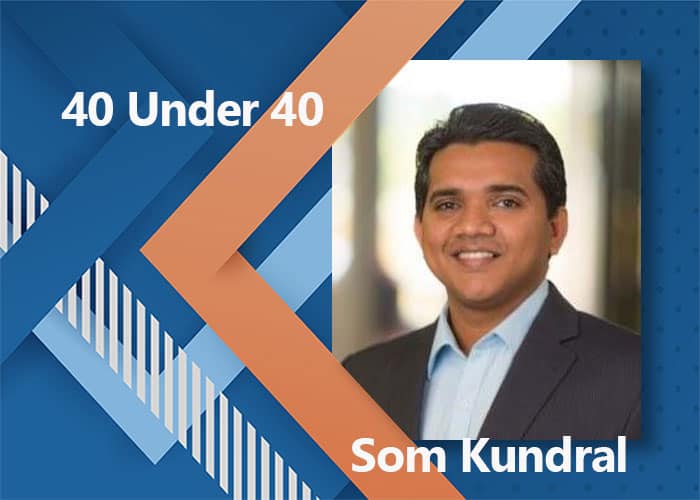
With great pleasure, we announce the American Academy of Environmental Engineers Certification Board granted Som Kundral certification in the specialty of Hazardous Waste Management and Site Remediation this month. Board Certified Environmental Engineers (BCEE) such as Kundral make up the top four percent of environmental engineering experts.
Kundral and his work are well established and recognized across the nation. As a rising star and SCS Engineers’ Young Professional, Kundral’s teamwork is not only recognized by his clients but by the American Council of Engineering Companies and the Environmental Business Journal with a Business Achievement Award for Groundwater and Stormwater Remediation Solution. Kundral is also a Waste360 40 Under 40 award recipient.
Well done, Som! We’re so proud of you and all of our SCS Young Professionals helping our clients build a better world.
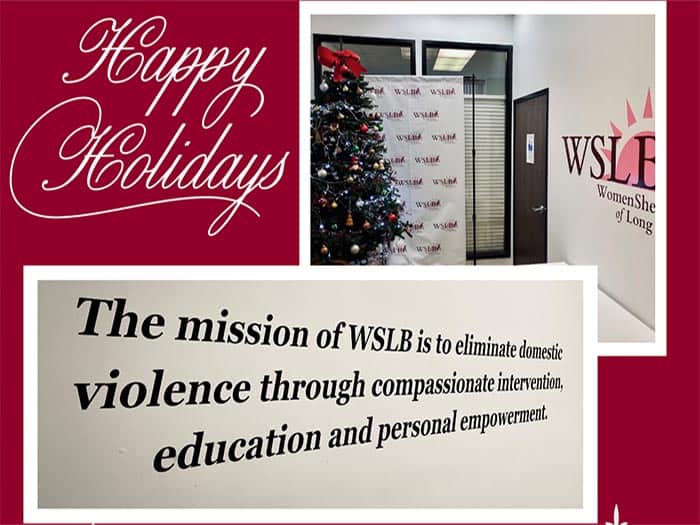
Since 1977, WomenShelter of Long Beach has helped thousands of families overcome the trauma caused by domestic abuse. WSLB assists victims and their children by providing safe housing and supportive services, including an emergency shelter, 24-hour crisis hotline, counseling, social services support, legal and health advocacy, and much more.
SCS Engineers adopted four families in our 5th year of sponsorship. We provide gift cards for each family and hope we can go back to shopping and wrapping gifts for them next year. We wish our families and all a happy holiday season!
More community support in 2021 here.
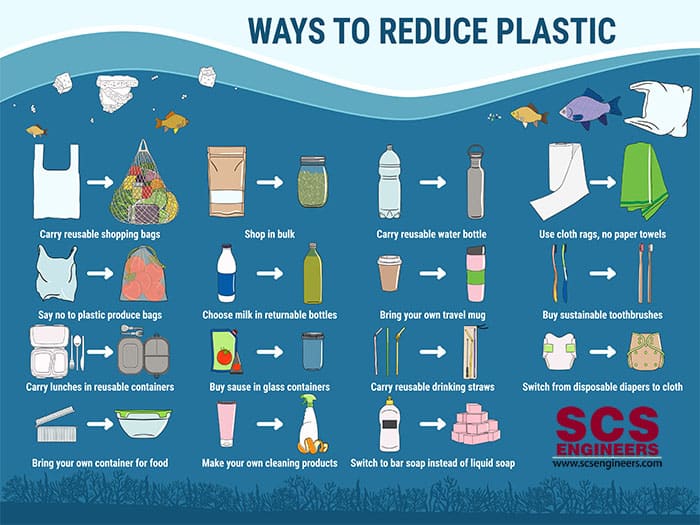
As noted in Waste360, SWANA’s recent report, “Reducing Contamination in Curbside Recycling Programs,” shows stubborn resistance to recycling even after an intense education and enforcement campaign in two towns. A bit more than one-quarter of the households simply didn’t seem to care. While the solid waste industry finds that hard to comprehend, we’re always looking for solutions, and we don’t give up.
Here’s a simple set of recommendations from Consumer Reports published in September for using less plastic. After all, if you don’t recycle, at least try to use less plastic! Most of the recommendations will save you a lot of money and are easy to do, some of which you’re probably already doing.
Thanks to Consumer Reports for its outstanding article that we share with you here.
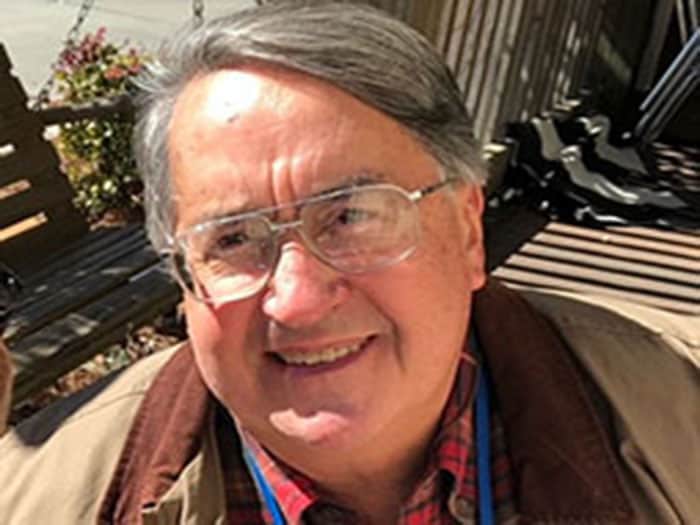
Michael Simms – Appointed by the Governor to the Louisiana Board of Professional Geoscientists
The Louisiana Board of Professional Geoscientists oversees the approvals of hydrogeologists and like scientific professionals in the state. This is quite an honor for Mike, a hydrogeologist with more than 30 years of experience. He learned of the appointment earlier this month and just had his first meeting.
Hydrogeologists are attempting to solve some of the big questions facing the world today, including sustainable water supply, food and energy production; environmental protection; and coping with climate change. They work closely with a wide range of industries to protect groundwater and much, much more.
Congratulations, Mike!

Recycling contamination occurs when materials are placed into the wrong recycling bin (placing a glass bottle into a mixed paper recycling bin, for example) or when materials are not properly cleaned, such as when food residue remains on a container. Simply throwing something into the recycling hoping that it will find its way to where it needs to eventually be is a major cost for your solid waste or public works department in time and money.
Bagged recyclables and other soft plastics cannot be processed by most sorting machinery, and sorting them by hand expose workers to health risks. Soft plastics also cause damage to the sort line. The level of contamination in a recycling bin directly affects your recycler’s ability to recover resources effectively.
November 15th was America Recycles Day. We’ve learned a lot about recycling facilities from the projects we’ve completed and the clients with whom we’ve worked. In that spirit, Betsy Powers of SCS shares a few tips for recycling right every day and greatly reducing contamination.
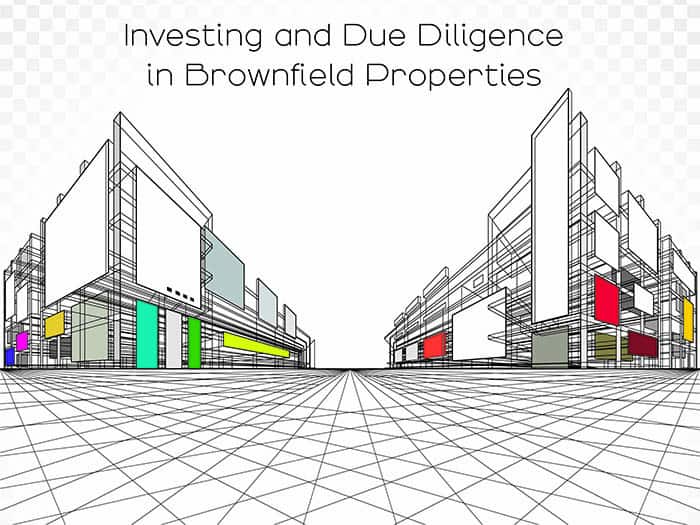
Brownfield development continues to be a hot topic for developers and investors, and they offer excellent opportunities – when you do your homework. SCS Engineers, an environmental consulting firm with 40 years of experience, offers a few tips when considering a Brownfield site.
Although we’ve successfully redeveloped hundreds of properties, one of SCS’s most visible Brownfields projects is the San Diego Padres Petco Park in downtown San Diego, completed in the early 2000s. The site for Petco Park was once a commercial and industrial area with former land uses such as auto repair facilities and gas stations, laundry facilities, and paint and lumber storage facilities. On top of that, it also stored petroleum hydrocarbon and hazardous materials.
What is a Brownfield?
Brownfield land is any previously developed land that is not being used or is under-utilized and may require environmental mitigation to redevelop. These properties are common in many urban areas and often present cost-effective, profitable redevelopment opportunities.
The development of Petco Park is a classic example of a brownfield project, which brought the San Diego Padres to downtown San Diego within a 26-city block portion of the East Village area now known as the Ballpark District. Before developing this beautiful stadium, as well as the new hotel, residential, and commercial development that blossomed around it, this area of East Village San Diego was underutilized. The area housed various commercial and industrial properties dating back to the 1800s, many of which had a legacy of environmental issues.
Because of the aggressive development schedule, and to streamline the redevelopment of the Petco Park and the Ballpark District, SCS and the local health department (the County of San Diego Department of Environmental Health) worked together to create a dynamic approach to its redevelopment of contaminated properties. This approach, embodied in the Property Mitigation Plan (PMP) (also known as a Soil Management Plan), is tailored to the specific property uses as an efficient means to address and mitigate environmental issues (such as dealing with contaminated soils) during the property construction and development process. If enrolled under oversight by the appropriate regulatory agency, the PMP serves as the blueprint for mitigation, soil management, and soil reuse. And when followed, it is designed to result in the closure of environmental cases for the site’s approved uses.
Overall, brownfields typically have environmental issues that can impede new development. But suppose these issues are identified during the due diligence process and integrated into the development and construction processes. In that case, redevelopment protecting future occupants and the environment is achieved while often presenting cost-effective and profitable redevelopment opportunities.
What can you put on a brownfield? Can it be used for residential units?
A brownfield is potentially useful for any structures – including residential. San Diego has numerous examples of brownfield redevelopment, including former burn dumps and landfills, railroad facilities, gas stations, automobile repair facilities, dry cleaners, and more. The feasibility and cost are dependent upon the environmental issues unique to each site. Cleanup standards will be stricter for residential uses, and in some cases, it may not be cost-effective to achieve those standards. Evaluations determine what uses are feasible.
How do you evaluate a Brownfields site?
One should proactively address environmental issues to reduce the risk of cost and schedule overruns or future liability issues while operating these properties as-is or during the due diligence or pre-development process. Identifying environmental risks before acquiring properties is critical, as is assigning potential costs to these risks. Depending on the nature of the transaction, these items are often useful as leverage during negotiations.
Brownfields are normally evaluated by performing a Phase I Environmental Site Assessment (ESA) to first study historic site information and previous uses. A Phase II study may be performed if the Phase I ESA identifies potential issues (known as Recognized Environmental Conditions). Phase II includes collecting and analyzing samples (i.e., soil, soil vapor, and groundwater) to assess whether environmental impacts are present. If enough sampling is completed, the extent of impacts can be estimated.
The American Society for Testing and Materials (ASTM) has standard protocols for Phase I ESA studies. However, as an integral part of your team, your environmental consultant can do more than meet these technical standards. The result of the evaluation provides you with an understanding of how this information will impact your project.
If contamination exists, what do I do?
Your first concern is to get an estimate of how much contamination is present and what it will cost to address, which will affect your bottom line and project feasibility. It’s also important to know that cleaning up contamination is manageable and can even be left on-site during construction and through your planned use in some cases. Your environmental consultant helps you mitigate any risks.
Is funding available to help pay for the site investigation and remediation?
The U.S. Environmental Protection Agency has grant programs that can pay for the assessment and cleanup of brownfields, but these programs are only available to governmental and non-profit organizations. However, a private entity may be able to team with these eligible parties. In addition, grants are available from agencies such as the California State Water Resources Control Board or the Department of Toxic Substances Control for certain soil and groundwater contamination types from gas station or dry cleaner releases. Each grant has its eligibility criteria, and in general, the entity that “caused” the contamination is not eligible. Federal, state, and local tax incentives may also be available.
Obtaining a grant or loan with the help of a qualified environmental consultant or an environmental attorney can be the difference in acquiring, cleaning up, and redeveloping a property. The grants don’t typically cover all the costs associated with the necessary cleanups, but they can cover most of these costs.
I hear insurance can help pay for cleanups as well as help protect buyers.
It can. A new property owner can obtain an environmental insurance policy to cover cleanup requirements, third-party claims for bodily injury and property damage, and associated legal expenses resulting from pollution or contamination. These insurance policies are available with various term lengths, and deductible amounts to satisfy the concerns of lenders or equity investors.
Other solutions include “insurance archaeology” to find old insurance policies that may have coverage for “pollution conditions.” Many firms, including SCS, do this type of work, sometimes on a contingency fee basis.
What are some good risk management strategies for brownfields?
The most important risk management strategy is to have a thorough understanding of the environmental issues on the site and how those issues can impact your redevelopment plans and bottom line. It is critical to have environmental and legal support experienced in strategies for identifying, anticipating, and managing risks on Brownfields.
Are brownfields sites good investment opportunities?
Brownfields can be excellent investment opportunities if you perform thorough due diligence and understand the risks of each site. Many potential sites exist in desirable locations or emerging areas. They should be available below market value and may have been on the market for a long time.
With proper planning and the help of a qualified environmental consultant, the mitigation or remediation of these impacts can be incorporated into the acquisition and development processes and result in a vibrant, profitable project that is protective of human health and the environment.
 Author Luke Montague is a vice president with SCS Engineers in its San Diego office.
Author Luke Montague is a vice president with SCS Engineers in its San Diego office.
You’ll find resources for funding brownfield redevelopment here.
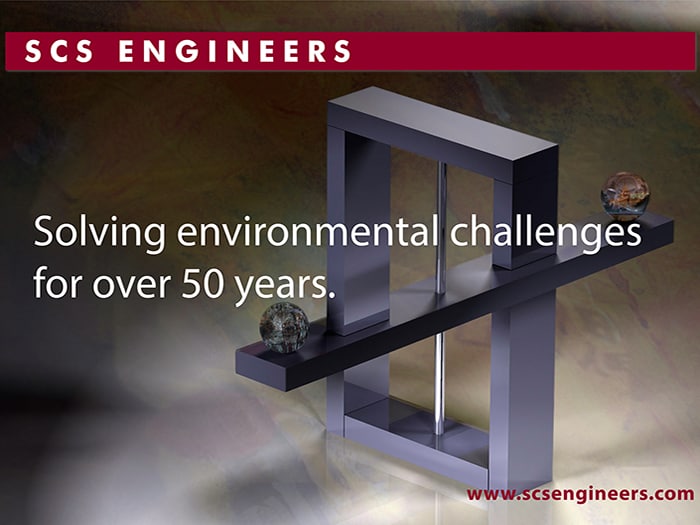
SWANA is optimistic regarding the positive role modern MSW landfills can play in managing solid waste – such as carpeting and clothing – containing PFAS. By disposing of these products in landfills and effectively treating landfill leachate for PFAS removal, the solid waste industry can provide society with an effective and proven method of managing PFAS wastes.
In support of members, the SWANA Applied Research Foundation (ARF) has issued a report summarizing and analyzing management options and treatment technologies that can address PFAS chemicals contained in landfill leachate on November 10, 2021. PFAS Management and Treatment Options for Landfill Leachate is available to SWANA ARF subscribers.
The research findings presented in the resulting report are based on a comprehensive review of the literature and an analysis of the commercially-available PFAS treatment systems and other management options for landfill leachate.
The new report serves as a companion report to one published by the ARF in June 2021 on PFAS Fate and Transport in WTE Facilities, available in SWANA’s Reports List.
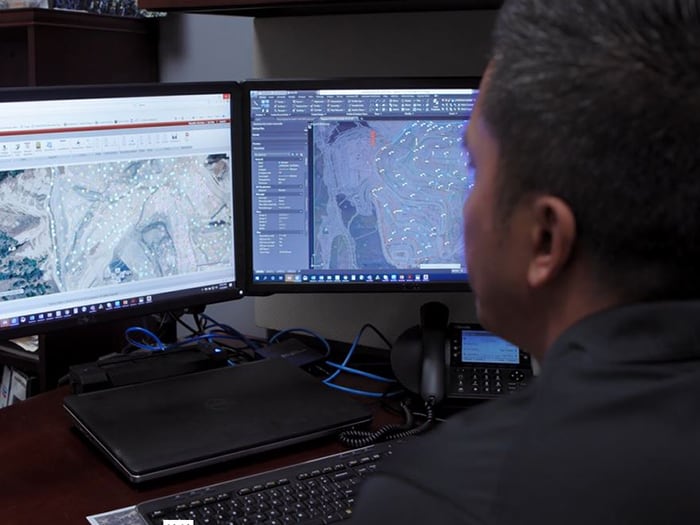
SCSeTools® – Developed by Landfill Gas Practitioners for Landfill Owners and Operators
The Birth of LFG Data Tracking
In the early 2000s tracking landfill gas data at facilities was anything but uniform, organized, or secure. The industry was using various methods to track data on paper forms and logbooks, then transferring it by hand into spreadsheets. Some of us used desktop database applications, but as the saying goes, necessity is the mother of invention.
From an SCS employee’s idea for demonstrating how to use landfill gas monitoring data to analyze and pinpoint system corrections, SCS DataServices® was born. In the span of several months, a team of SCS’s landfill engineers, field technicians, and technology gurus worked with client-needs to create a concept application visualizing collected landfill data on maps. Our staff field-tested it with good results, and SCS Field Services began using the application to visualize issues with wellfields that aren’t readily apparent when looking at spreadsheets.
A large SCS landfill client had seen our field staff using DataServices, asked if SCS would consider providing them with access to the application on a subscription basis. Our team adapted DataServices, added features, and continued improvements tailored for the client’s use.
As soon as secure data transfer became feasible, SCS moved to an Internet-based solution for our landfill gas practitioners. The platform called SCSeTools® holds the data collected by SCS DataServices®.
Applications and features roll out as we continually update and upgrade, incorporating ideas and improvements from our users and staff along the way. DataServices is addressing the landfill gas management needs of over 600 landfills across the US and Canada in 2021.
The keys to success follow our mission and values of maintaining close communications with our clients, field staff, engineers, and eTools support staff (all landfill gas practitioners), with the help of software engineers. Technology companies are not up at night thinking about landfill operations, but we are.
We introduce our SCS eTools landfill technology capabilities and a few of the creative and talented SCSers behind the technology in the next segment. Our speakers walk you through demonstrations of how over one-third of the landfill owners and operators in North America are increasing efficiencies using SCS eTools.
Visualizing Landfill Challenges – Shortcuts to Keeping Your Wellfield in Balance
DataServices shows the entire wellfield for any monitored parameters and zooms in on troublesome areas or wells. Results can be as simple or detailed as the landfill owners’ environmental and business needs dictate. The detailed examples here illustrate how graphs, maps, and charts help keep the wellfield in balance. We link each challenge to the description of a video demonstration.
In balance means extracting more gas for renewable energy, preventing odors and methane migration, keeps subsurface and surface conditions and workers safe. The information can help diagnose equipment conditions before they become costly, maintain regulatory compliance, and support cost estimates if the landfill is expanding or more infrastructure investment or equipment is needed.
Looking at vacuum distribution across a gas collection system – Select the system pressure map, which highlights vacuum distribution across the wellfield to show the wells with good (expected) vacuum, pressure drop over distance, and any wells unexpectantly losing vacuum. Zooming in and changing the vacuum ranges further enhances where to assign staff to troubleshoot any identified issues.
Using a methane distribution map shows whether the wells are tuned to where the landfill owner wants them. Wells may be identified below the targeted range, indicating slight over pulling; a technician can use this map to identify such issues and quickly check the identified wells. Wells identified above the desired methane tuning range indicate wells not collecting enough gas, which has consequences. These wells can be the source of odors, leachate seeps, possible lateral migration to an out of waste probe. Not sending enough fuel to a power plant or atmospheric releases can affect surface emissions monitoring.
Managing liquids – Changing waste streams and more rainfall in certain areas of the country complicates liquids management. DataServices visualizes the impacts of liquids on wells and helps landfill owners better manage a proper liquids removal program. The program will let them know how many pumps to budget for and, over time, where to relocate well dewatering pumps so that they are most efficient at removing liquids from landfills.
High-BTU Gas Plants –Filter maps help users locate wells contributing to gas dilution into renewable energy plants. It can help create punch lists for landfill staff to investigate, troubleshoot and tune. As wellfield technicians make corrections, they show on the map in real-time.
Temperature and subsurface oxidation events – Some call the condition subsurface fires, but this is a serious issue for landfills. Over-pulling wells, damaged infrastructure, and other conditions can cause oxidation events. Using a combination of temperature Parameter Maps to review wellhead temperature distribution and a Points Chart feature provides a deeper dive into the data. It provides more insight into which well or wells may be contributing to the high-temperature issues.
Locating a specific well – That’s not so easy when hundreds of wells surround you and at larger landfills. DataServices had built-in filter features to identify a single monitoring point on a wellfield map easily.
Customizing for compliance, best practices, and rules – DataServices allows monitoring points across a single site to have customized rules for each monitoring point. Rules can be for regulatory purposes, standard operating procedures, best management practices, and even site-specific preferences or any combination thereof. It is efficient to customize rule application to landfills and collection points – meaning wells, probes or ports, horizontal collectors. This customization capability helps organize and confirm regulatory compliance. It is especially salient with the 2021 EPA and state compliance changes for a single landfill or an organization with hundreds of landfills.
MobileForms – Inspection forms, blower flare station monitoring forms, load tracking from municipalities, incoming hazardous waste tracking, MRF bale counts are examples of paperless entry available. The data feeds directly from mobile phones to the supervisor and into the maintenance department, so staff can start cataloging and looking at what’s going on in real-time at several types of facilities. It’s available for regulators and inspections and helps reduce staff hours tabulating and centralizing the information. Any information historically captured on a form or log attached to a clipboard can now be captured and stored electronically. From there, it can be recovered and produced as a PDF export file or data from the forms used to trend data and help make informed operational decisions.
MobileTools – DataServices in a condensed format suitable for mobile devices. Field staff use MobileTools to save time formerly used to return to the office, transfer/transcribe the collected data and upload it to a supervisor for quality checks before storage. Technicians can now recall the last 20 readings for any given well and review trend graphs on their phones or tablets while standing adjacent to the well they have questions about and need to access the data. MobileTools also allows them to upload field data such as liquid level readings while the data is being collected. The information instantly populates into DataServices and is available for review by others on the project team.
The most valuable tools are in development now for release in 2022. ARC GIS integration developed under SCS RMC® will further enhance DataServices with even better visualization and location capabilities and provide enhanced features such as allowing landfill owners to see their well as-built information and view subsurface information about their wells.
Learn more at SCS Engineers, where we adopt our clients’ environmental challenges as our own.
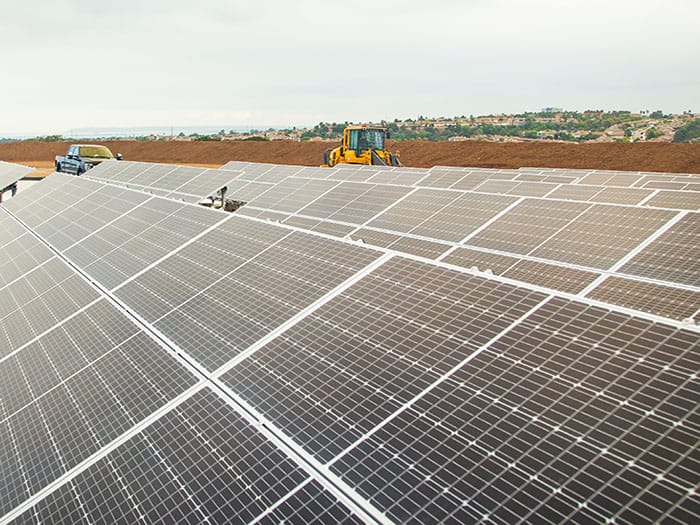
In October, Republic Services’ Otay Compost Facility at the Chula Vista, California, Otay Landfill opened for business. The compost facility helps communities in San Diego County meet the requirements of California’s SB1383 law mandating the diversion of organic waste from landfills.
The composting facility designed by SCS Engineers in collaboration with Sustainable Generation operates completely off the grid using solar energy. It is the first fully solar-powered compost facility in the state and can process 100 tons of organics per day, with plans to double capacity by year-end.
Both organics recycling and reuse leaders, Republic Services hired SCS Engineers to design the Otay Compost Facility. The design uses renewable energy to run 100 percent of the composting operations at the site. The facility design includes using technologies to speed the maturation rates and reduce excessive odors. Blowers to aerate the organic material, oxygen and temperature sensors, and advanced compost cover technology produce a high-quality product.

“Republic’s taken the goals of SB 1383, to reduce emissions of short-lived climate pollutants further. They’re running a sustainable facility that enables residents, businesses, and government to easily reuse and recycle more within a smaller carbon footprint than ever expected,” says Vidhya Viswanathan, engineer and project director.
As California collects and recycles organic materials from homes and businesses, local governments will use the products made from recycled organic material for compost and mulch. Recycling organic waste into compost creates a nutrient-rich soil amendment, preserving natural resources and reducing water consumption working within a circular economy. This California jurisdiction is ready for the SB1383 deadline on January 1, 2022.
“Republic Services supports California’s effort to divert food and yard waste from landfills to facilities such as this one,” said Chris Seney, Republic’s director of organics operations. “We’re grateful to SCS for their partnership in helping us bring this facility, co-located at an active landfill, to reality.”
Please watch the YouTube video to see the facility and learn more about its environmental value.
SCS Engineers is proud of helping our municipal and private clients bring the most value to their environmental solutions and communities. To learn more about SCS Engineers, view our 50th-anniversary video.
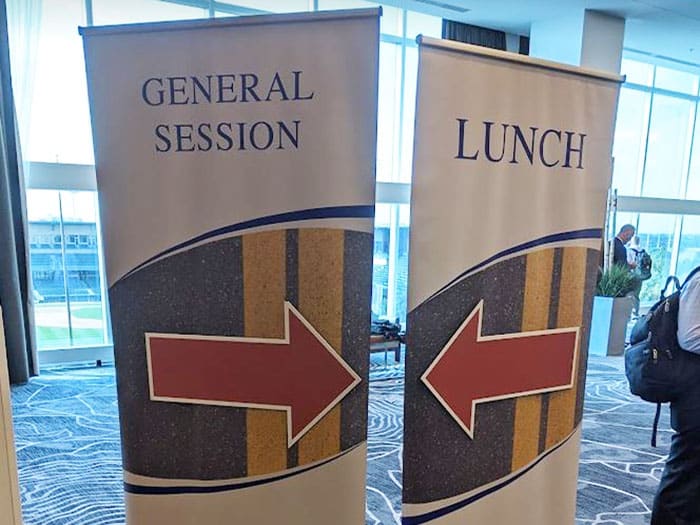
We could not resist sharing this picture!
SWANA’s WASTECON® helps public sector solid waste leaders and their teams plan sustainable futures for their communities. The conference is curated especially for solid waste leaders to immerse themselves in the latest executive topics.
See you there!